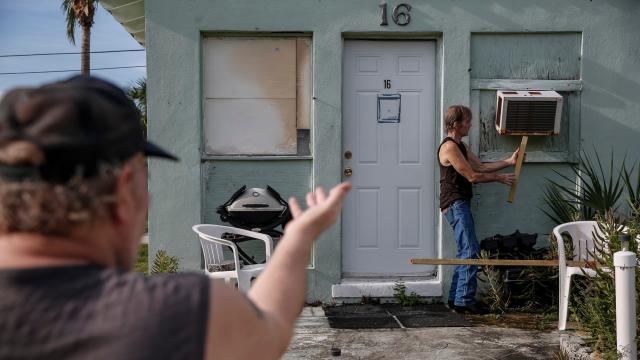Low-income households of colour tend to spend a bigger share of their income on energy bills. New research from the American Council for an Energy-Efficient Economy (ACEEE) shows just how much more those households are spending.
The new report is based on 2017 numbers from the Census Bureau’s American Housing Survey, which provides household-level data and demographic information for a representative sample of households nationally, regionally, and in select metropolitan areas. ACEEE used that data to calculate energy burdens — the percentage of household income that goes toward paying for utilities — based on households’ annual income, annual electric bills, and annual heating costs. They then compared those burdens along lines of income and background.
The authors define low-income households as those living 200 per cent below the federal poverty level. On average, they spend 8.1% of their income on energy costs compared to 2.3% for non-low-income households. Two out of five households spend more than 10% of their income, which can further entrench existing inequalities.
On average, Black, Latino, and Indigenous people also spend a much larger portion of their income on utilities than their non-Latino white counterparts. Black households spend 43% more, Latino households spend 20% more, and Native households spend 45% more.
“Sadly, it’s not surprising to see that energy costs are so high for so many families,” said Joseph Daniel, a senior energy analyst with the climate and energy program at the Union of Concerned Scientists, who did not work on the report. “And while the report looks at averages, it’s important to note that some families face an even higher energy burden than the averages show. For example, in research I’ve done, we’ve seen counties in Appalachia where people are spending 30% of their annual income on energy.”
[referenced id=”1387327″ url=”https://gizmodo.com.au/2020/09/a-plan-to-cool-us-down-without-burning-up-the-planet/” thumb=”https://gizmodo.com.au/wp-content/uploads/2020/09/05/nkzev5ein5spavr3qloz-300×168.jpg” title=”A Plan to Cool Us Down Without Burning Up the Planet” excerpt=”Earlier this week, residents of Louisiana and Texas who were just pounded by Hurricane Laura endured a heat index of 42.8 degrees Celsius. This weekend, California is expected to see its second record-breaking heat wave in three weeks. That’s just the U.S. this week; nearly every corner of the world…”]
A key reason that disadvantaged people face higher energy burdens is energy inefficiency. Long, racist histories of segregationist policies like redlining and restrictions on lending for mortgages have meant households of colour are more likely to live in inefficient housing with old, energy-guzzling appliances and heating and cooling systems. In the study, the authors also found that families living in housing constructed before 1980 saw energy burdens 21% higher than those of families living in housing built after 1980, and past research shows that poorer people and people of colour tend to live in older homes.
Residents of some geographic areas face higher energy burdens on average. The authors found that residents of the Southeast, including Alabama, Kentucky, Mississippi, and Tennessee, have the greatest percentage of highly burdened households. Previous ACEEE research found that these states have weak energy efficiency policies.
“The East South Central states are amongst those with the highest poverty rates and least investment in energy efficiency,” Ariel Drehobl, lead author of the report and senior research associate at ACEEE, wrote in an email. “Low incomes paired with lack of access to the financing for energy efficient investments is a recipe for high burdens.”
The study is based on pre-pandemic data, but amid the covid-19 crisis and ensuing unemployment crisis, families are facing even more issues with energy burden.
“The pandemic and recession are straining family budgets and exacerbating inequities, and I would expect that energy burdens are now even higher,” said Drehobl.
Research conducted seperately by the Union of Concerned Scientists found that amid lockdowns and recent heat waves, households have been facing even higher energy bills than normal. The analysis found that the average family saw their bill increase by 25% this summer above previous years.
“Between having to stay at home to be to protect yourself and to remain socially distant, along with increased heat from the summertime weather…we found customers will see an increased energy bill of up to $US50 ($69) per month,” said Daniel. “In Florida, energy bills are on average $US46 ($63) higher a month this summer, which is 30% higher than they usually are.”
This is particularly concerning because when households can’t pay their bills, they could have their utilities shut off. A recent report found that by the end of September, 34.5 million households are set lose their utility shutoff protections as shutoff moratoriums in 14 states expire. During a pandemic, losing access to water could be a huge issue, to say nothing of electricity and gas for cooking or heating.
“These communities who already experience acute systemic inequalities, barriers, and limited access to public and private resources before the pandemic may be at particular risk for having their utilities shut off,” said Drehobl. “I’m concerned about how households will afford their accumulating energy and keep their lights on in the midst of the pandemic.”
There are ways policymakers could alleviate Americans’ struggles with utility bills. That includes reinstating shutoff bans and making them permanent, as well as setting caps on energy bills. Daniel also said states and municipalities could instate policies forcing builders and owners of rental properties to make data about their properties’ energy usage public, which could inform potential renters and encourage landlords to improve efficiency.
The report authors also suggest a number of long-term solutions, including funding state and federal programs to weatherize homes so that they are better insulated and upgrading household appliances to promote efficiency. Doing so would also allow households to use less electricity and thereby put less strain on our grid, while also being a win for the climate.
